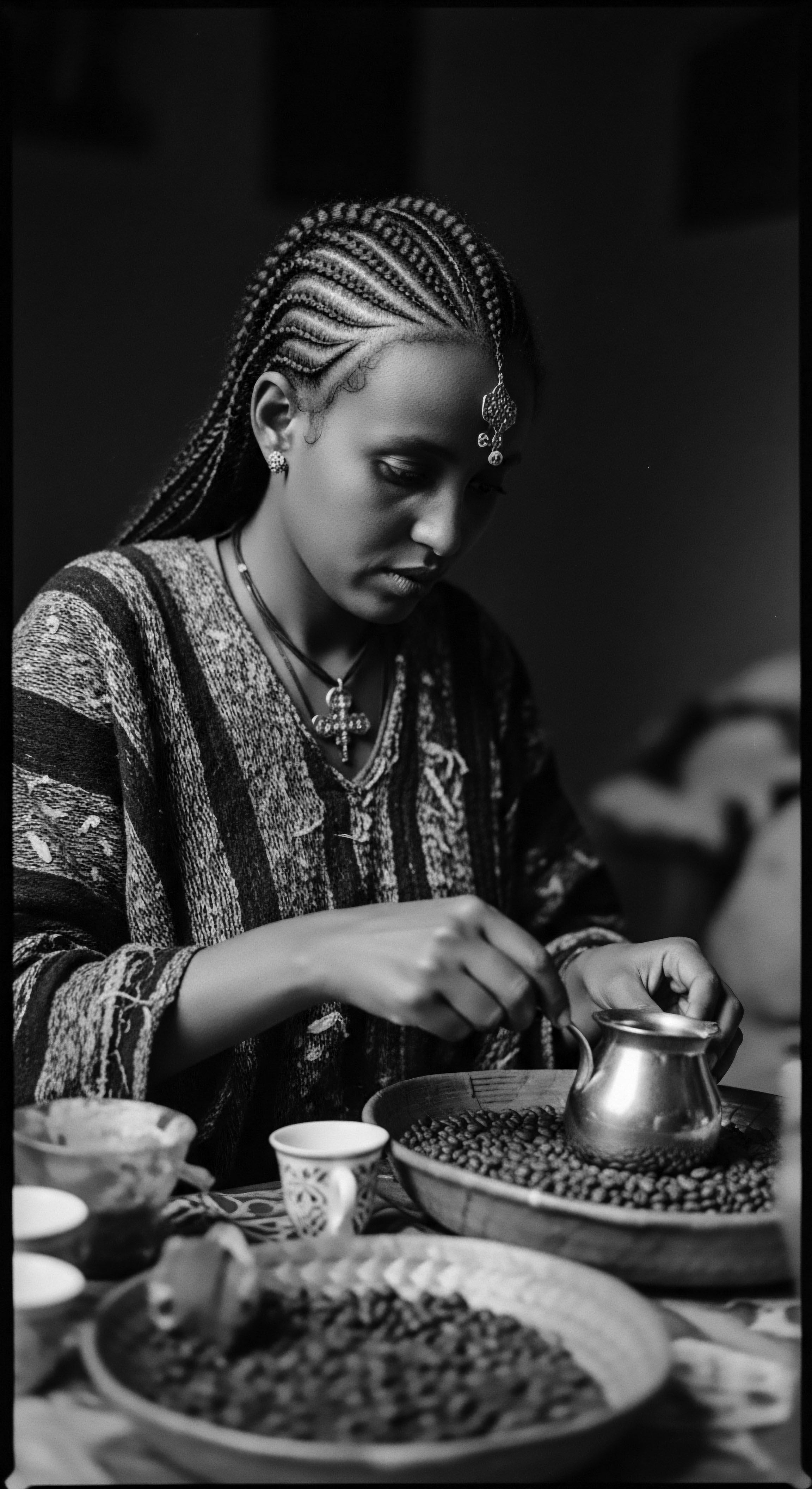
Roots
There are narratives etched into the very helix of our being, stories carried not only in our bloodlines but within the curl, the coil, the wave of textured hair. For generations, stretching back across continents and centuries, hair has been far more than mere adornment for Black and mixed-race communities. It stands as a profound repository of ancestry, a tangible link to forebears who understood the earth’s bounty and its gifts for well-being.
This wisdom, often passed in whispers and gentle hands, found one of its deepest expressions in the tradition of oiling hair. How might the modern scientific lens, with its gaze upon molecular structures and physiological responses, truly acknowledge and uphold these ancient, deeply personal practices?
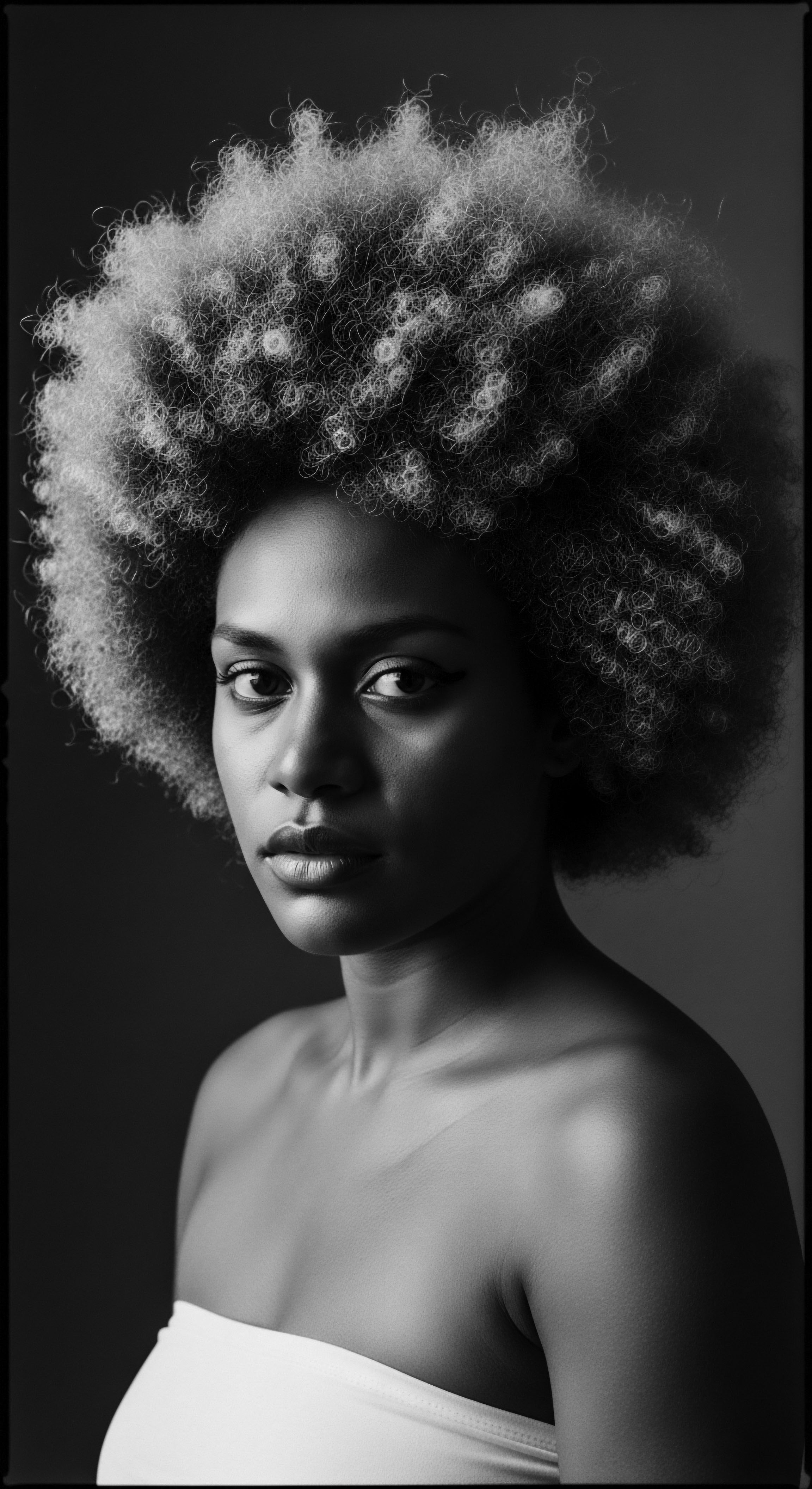
The Ancestral Strand’s Architecture
To truly appreciate the deep-seated wisdom of ancestral hair oiling, one must first grasp the intrinsic design of textured hair. Unlike its straighter counterparts, which often possess a more cylindrical cross-section, the hair strand of African and diasporic descendants typically displays an elliptical or flattened shape. This unique geometry causes the hair to curve and coil as it grows, creating natural twists and turns along its length. These points of curvature, while beautiful, represent inherent vulnerabilities where the cuticle, the hair’s protective outer layer, can lift.
Such a structure renders textured hair more susceptible to dryness, as natural scalp oils, known as sebum, struggle to travel effectively down the curvilinear path of the hair shaft. Moreover, the density of these curls means a greater number of individual strands can tangle and rub against each other, increasing mechanical friction and, consequently, breakage.
Ancestral caregivers, long before microscopes revealed cellular intricacies, possessed an intuitive grasp of these vulnerabilities. Their practices were not random acts; they arose from observation, from living in harmony with nature, and from the deep desire to protect and adorn the crowning glory. The application of oils, butters, and various plant extracts became a cornerstone of textured hair care, a protective balm against environmental elements and daily wear. These traditions speak to a continuity of knowledge, where each generation learned from the last, adapting and refining methods through lived experience.
Ancestral hair oiling practices, born from acute observation of textured hair’s unique architecture and environmental challenges, offer deep insight into its care.

The Elemental Science of Scalp Nourishment
The scalp, too, holds significance in this heritage of care. It is the soil from which the hair grows, and its health directly influences the vitality of the strands. Traditional oiling rituals frequently began with a gentle massaging of the scalp, a practice now understood to boost local circulation, aiding in nutrient delivery to hair follicles.
These ancient hands, laden with potent plant extracts, unknowingly facilitated a micro-environment conducive to growth and strength. The oils created a protective film, guarding against dryness and irritation, which could otherwise impede healthy hair emergence.
Consider the very act of massaging the scalp with warmed oil. This ritual, common across many African and South Asian lineages, prepared the scalp, softening it and making it more receptive to nourishment. This tactile connection between caregiver and recipient also speaks volumes about the communal aspect of hair care, transforming a biological necessity into a shared experience of comfort and bond. The choice of plant oils was seldom arbitrary; communities learned through trial and collective wisdom which botanical offerings served hair and scalp best in their specific climates and conditions.
- Palm Oil ❉ Historically used in various West African communities, offering moisturizing and protective properties for both hair and skin. (Ethnobotany of African Plants, 2020)
- Shea Butter ❉ A staple from the shea tree native to West Africa, revered for its emollient properties and ability to seal moisture. (Healthline, 2018)
- Coconut Oil ❉ Prevalent in coastal African communities and diasporic regions, valued for its ability to penetrate the hair shaft and reduce protein loss. (Newsweek, 2022)
- Argan Oil ❉ Hailing from Morocco, recognized for its richness in antioxidants and vitamin E, aiding in rejuvenation. (Healthline, 2018)

Ritual
The journey of textured hair care from the ancestral hearth to the modern salon is a testament to the enduring power of ritual. Hair oiling, far from being a solitary application, has historically formed an intrinsic component of styling practices, a tender thread connecting daily grooming to a vast heritage of artistry and ingenuity. These methods, born of necessity and elevated to art, found their efficacy affirmed by the very properties of the natural oils employed, creating a harmonious dialogue between tradition and tangible result.
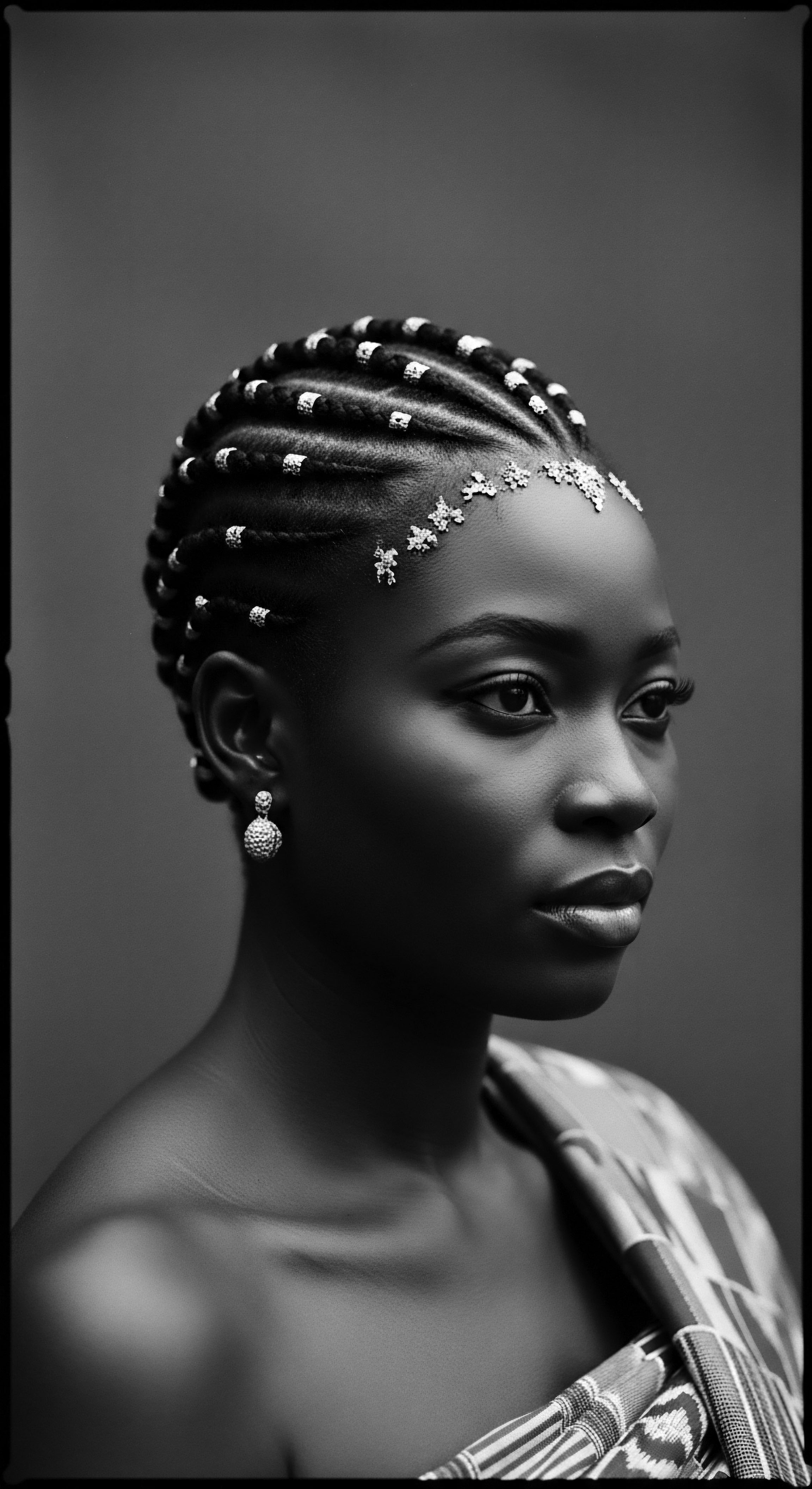
Oiling’s Place in Protective Designs
Across the African diaspora, protective styles — such as intricate braids, twisted coils, and locs — served as more than aesthetic choices. They were strategic defenses against environmental stressors, daily friction, and breakage. The application of hair oils and plant butters was an integral step in creating and maintaining these styles.
Before braiding or twisting, oils were applied to individual hair sections, providing lubrication that eased the detangling process, minimized tugging, and reduced stress on the delicate hair strands. This thoughtful preparation helped to guard against damage during manipulation, a particularly vital step for hair prone to dryness and brittleness.
When strands are oiled, their surface becomes smoother, reducing the friction that can lead to cuticle abrasion and subsequent breakage. This principle, understood by ancestral practitioners through countless generations of hands-on experience, is now explained by modern tribology, the science of friction, wear, and lubrication. The lipids within the oils act as a barrier, cushioning the hair against external aggressors and preserving its integrity within tightly woven styles. The longevity of these protective designs was also enhanced by the sealing properties of oils, keeping moisture locked within the hair shaft, preventing the common issue of reversion or frizz that can unravel a style.
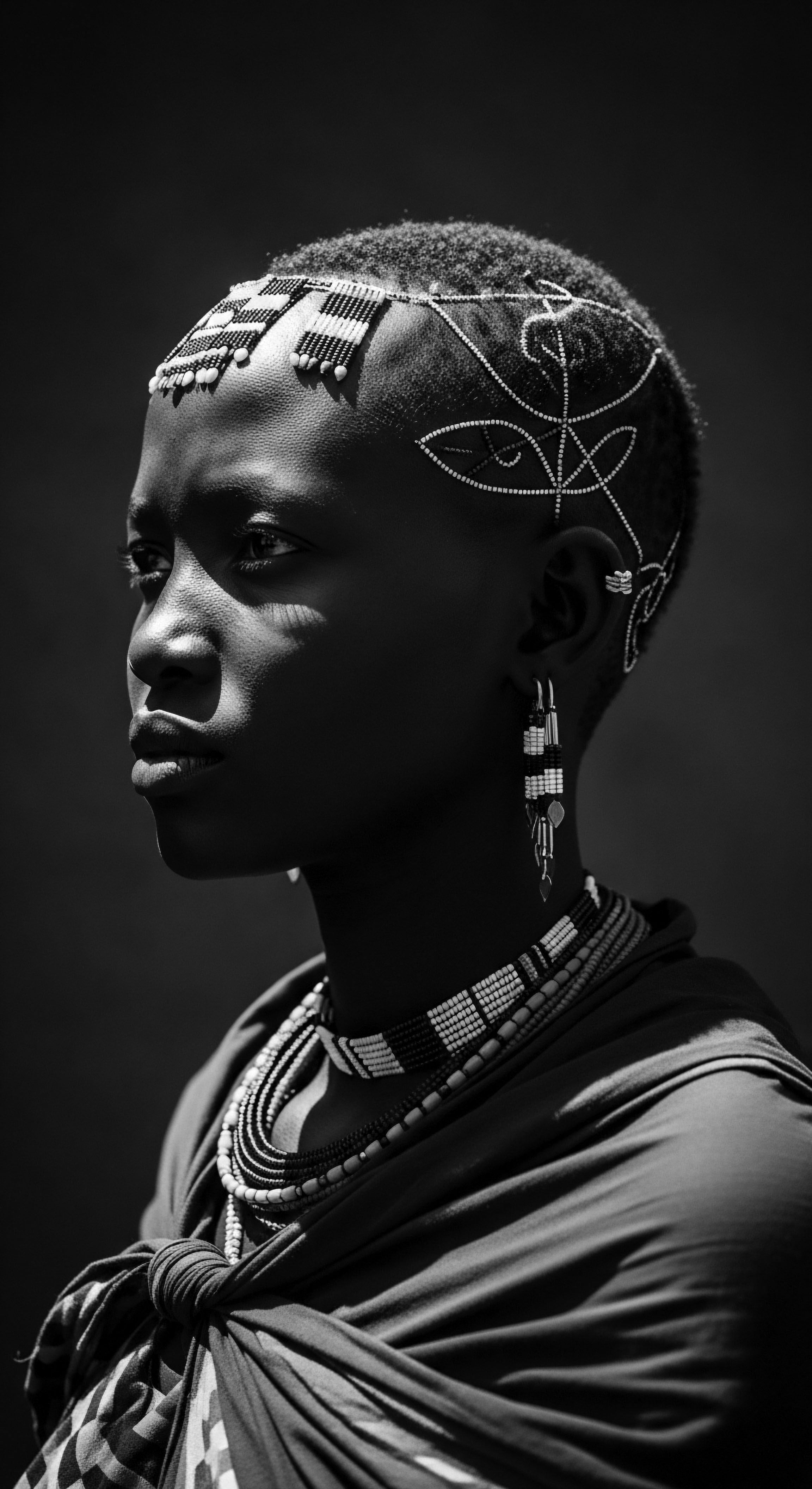
How Did Ancestral Tools Support Oiling Rituals?
Traditional tools played a quiet yet important part in these oiling rituals. Wide-toothed wooden combs, often handcrafted and passed down through families, were used to gently distribute oils through sections of hair. These combs, with their smooth, polished surfaces, minimized snagging compared to more abrasive materials. Hair picks, too, assisted in separating and lifting hair without causing undue tension, making way for thorough oil application from scalp to tip.
The hands themselves, however, were perhaps the most significant tools – kneading, smoothing, and massaging the oils into the hair and scalp, a practice that reinforced community bonds and familial affection. The act of sitting for hours, having one’s hair tended to, became a shared experience, a moment of teaching, of storytelling, of quiet intimacy within households and communities.
Traditional hair oiling, particularly for textured hair, served as a foundational practice within protective styling, mitigating breakage and enhancing style longevity through lubrication and moisture retention.
| Ancestral Observation Hair feels softer and more pliable after oil application, making it easier to manage. |
| Modern Scientific Affirmation Oils provide an emollient effect, smoothing the cuticle and reducing inter-fiber friction, thus improving manageability and reducing mechanical stress during styling. |
| Ancestral Observation Oiled hair appears shinier and retains moisture longer, especially when braided or twisted. |
| Modern Scientific Affirmation Lipids from oils act as occlusive agents, forming a hydrophobic layer on the hair surface that slows water evaporation, seals in hydration, and enhances light reflection for increased luster. |
| Ancestral Observation Regular oiling seemed to reduce shedding and breakage, allowing hair to grow longer. |
| Modern Scientific Affirmation Oils reduce hygral fatigue (damage from repeated swelling and shrinking with water exposure) and decrease protein loss during washing, strengthening the hair shaft and minimizing fracture. (Keis et al. 2005) |
| Ancestral Observation The enduring efficacy of ancestral hair oiling for textured hair rests upon principles increasingly validated by contemporary material science and trichology. |

Relay
The enduring wisdom of ancestral hair oiling, a practice so deeply embedded in the lives of Black and mixed-race communities, continues its journey through generations, relaying its truths from elder to youth. Here, modern science arrives not to dismantle, but to thoughtfully examine, decode, and ultimately affirm the profound effectiveness of these traditions, particularly in the realm of holistic care and problem-solving for textured hair.

How Does Ancestral Oiling Inform Modern Scalp Health?
For centuries, the health of the scalp was seen as central to hair vitality, a truth understood intuitively by ancestral practitioners. In West Africa, for example, the use of Shea Butter as a primary hair and skin treatment has a documented lineage spanning millennia. Derived from the nuts of the shea tree, its application to the scalp was not merely for moisturizing; it was a ritual act believed to calm irritation and promote an environment conducive to hair growth. Modern scientific inquiry now provides compelling reasons for this efficacy.
Shea butter, Vitellaria paradoxa, is rich in essential fatty acids, including oleic acid and stearic acid, alongside vitamins A, E, and F (Willetts, 2017). These components contribute to its anti-inflammatory properties, soothing the scalp and reducing conditions like dryness or flaking (Healthline, 2018). The presence of cinnamic acid esters further supports its anti-inflammatory action, potentially reducing scalp irritation that could impede healthy hair growth (Wellnesse, 2023). This mirrors the ancestral understanding that a soothed, well-nourished scalp forms the foundation for robust hair.
The practice of warm oil treatments, a common ancestral method, also finds resonance in current dermatological understanding. Gentle heat, when combined with oil application, helps to slightly open the hair cuticles, allowing the beneficial compounds within the oil to penetrate more deeply into the hair shaft. This process optimizes the moisturizing and restorative effects of the lipids and vitamins present in natural oils, strengthening the hair from within. The scalp massage often accompanying these treatments is now recognized to stimulate blood flow, ensuring that vital nutrients reach the hair follicles more efficiently, thus supporting consistent growth and overall strand health.
Modern scientific analysis, through its understanding of fatty acid profiles and anti-inflammatory compounds, validates the ancient effectiveness of ancestral oils like shea butter for textured hair and scalp health.
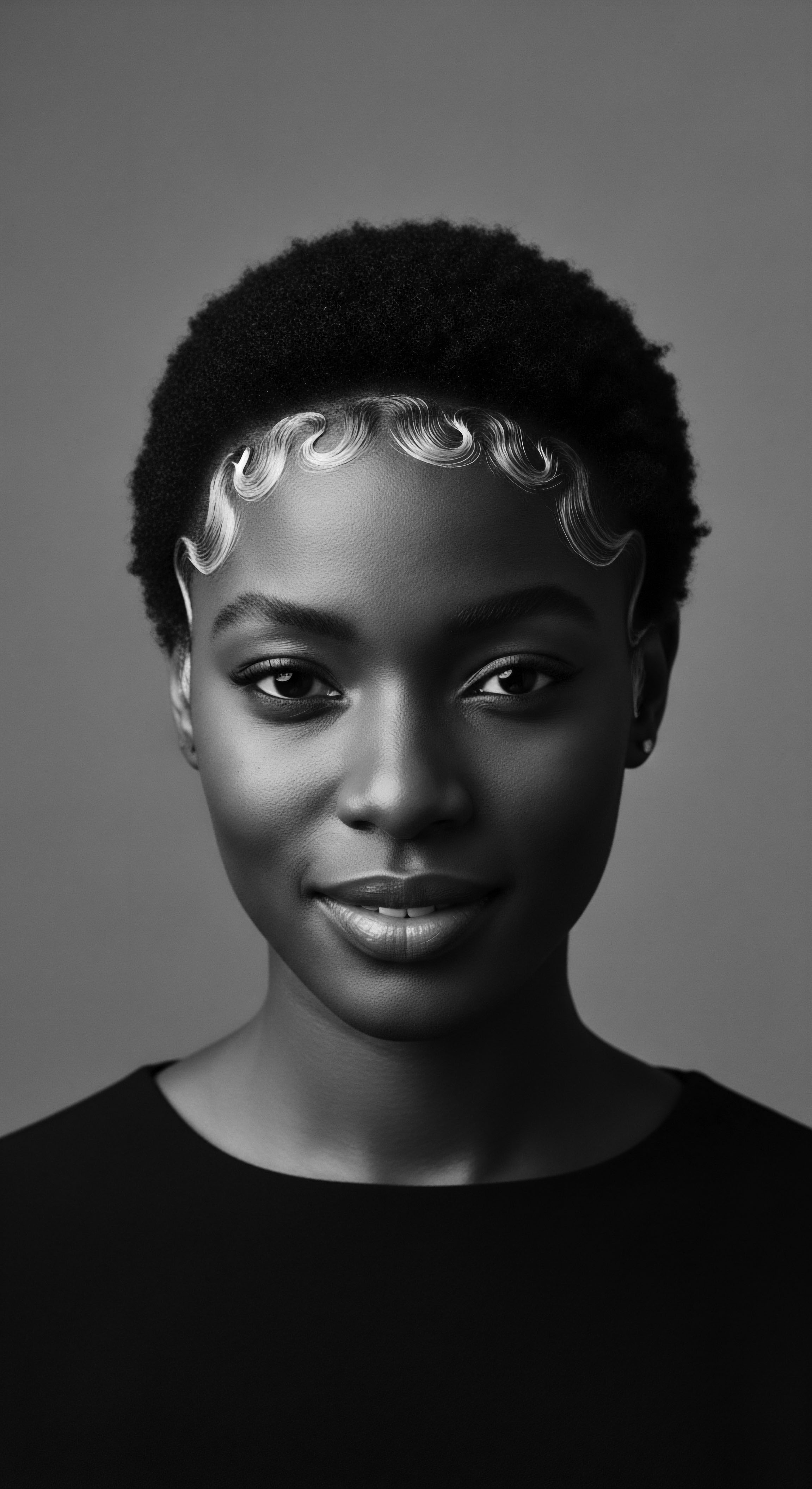
Nighttime Rituals and Persistent Moisture
The ancestral tradition of hair oiling extends into the realm of nighttime care, a period of rest where the hair can undergo significant stress without proper protection. Communities understood that sleeping directly on rough surfaces could lead to friction and moisture loss. This awareness gave rise to the practice of covering hair at night, often with cloths or wraps that have evolved into the bonnets and scarves many wear today.
When hair is oiled before being covered, it creates a formidable seal, locking in the moisture from styling products and the natural oils of the scalp. This reduces the nightly friction against bedding, which can otherwise lead to tangles, breakage, and dryness, especially for textured strands that are already prone to moisture depletion.
Consider the delicate balance of the hair’s lipid barrier. Textured hair, with its unique structure, often has a less effective natural lipid layer compared to straighter hair types, making it more vulnerable to moisture evaporation. Ancestral oiling rituals, particularly before bed, compensated for this, providing an external barrier that mimicked and augmented the hair’s natural defenses. The act of applying a rich butter or oil, then wrapping the hair, served as a preventative measure, ensuring that the hair remained hydrated and supple throughout the night, prepared for the next day’s styling or simply to maintain its health during periods of non-manipulation.
The continuous dialogue between ancestral methodologies and contemporary scientific insight reveals a profound truth ❉ the wisdom of those who came before us was not merely folklore, but an empirical science developed through generations of lived experience and keen observation. As we continue to study the intricacies of textured hair and the complex chemistry of natural oils, we uncover layers of affirmation for practices that were once dismissed or misunderstood. This convergence of ancient reverence and modern evidence allows us to honor the past while building a future of truly informed and respectful hair care.
- Chebe Powder ❉ Originating from the Basara Arab women of Chad, traditionally mixed with oils or butters and applied to damp hair, then braided. It strengthens the hair shaft, reduces split ends, and improves elasticity, preventing breakage and allowing for greater length retention. (Sellox Blog, 2021; Chebe Powder, 2025)
- Ayurvedic Oils (Coconut, Sesame, Amla) ❉ Used in Indian traditions for thousands of years, these oils are selected for their specific benefits, such as reducing protein loss (coconut oil) and stimulating blood flow to the scalp, thus improving hair health and growth. (Newsweek, 2022)
- Jojoba Oil ❉ While originating in Indigenous American cultures, its similarity to natural human sebum made it valued in Black beauty traditions, especially for moisturizing and scalp hydration, gaining traction during the natural hair movement of the 1970s and 2000s. (BeautyMatter, 2025)
| Ancestral Hair Concern Dryness and Brittleness |
| Traditional Oiling Approach Regular application of heavy oils and butters like shea butter or coconut oil to hair and scalp. |
| Modern Scientific Validation These oils, rich in fatty acids, penetrate the hair shaft or sit on its surface to reduce water loss, acting as humectants and emollients to soften strands and improve elasticity, reducing fracture. |
| Ancestral Hair Concern Breakage and Length Retention Challenges |
| Traditional Oiling Approach Protective styling with oils to reduce friction; use of ingredients like Chebe powder mixed with oils. |
| Modern Scientific Validation Oils reduce mechanical stress during manipulation and limit hygral fatigue. Certain botanical ingredients strengthen the hair cuticle and cortex, minimizing damage. |
| Ancestral Hair Concern Scalp Irritation and Flaking |
| Traditional Oiling Approach Massaging medicated oils or infusions of herbs into the scalp. |
| Modern Scientific Validation Anti-inflammatory compounds (e.g. cinnamic acid in shea butter) in traditional oils soothe the scalp, while antimicrobial properties address fungal or bacterial imbalances, fostering a healthier environment for follicles. |
| Ancestral Hair Concern The enduring utility of ancestral hair oiling for addressing common textured hair issues finds compelling support in contemporary scientific understanding. |
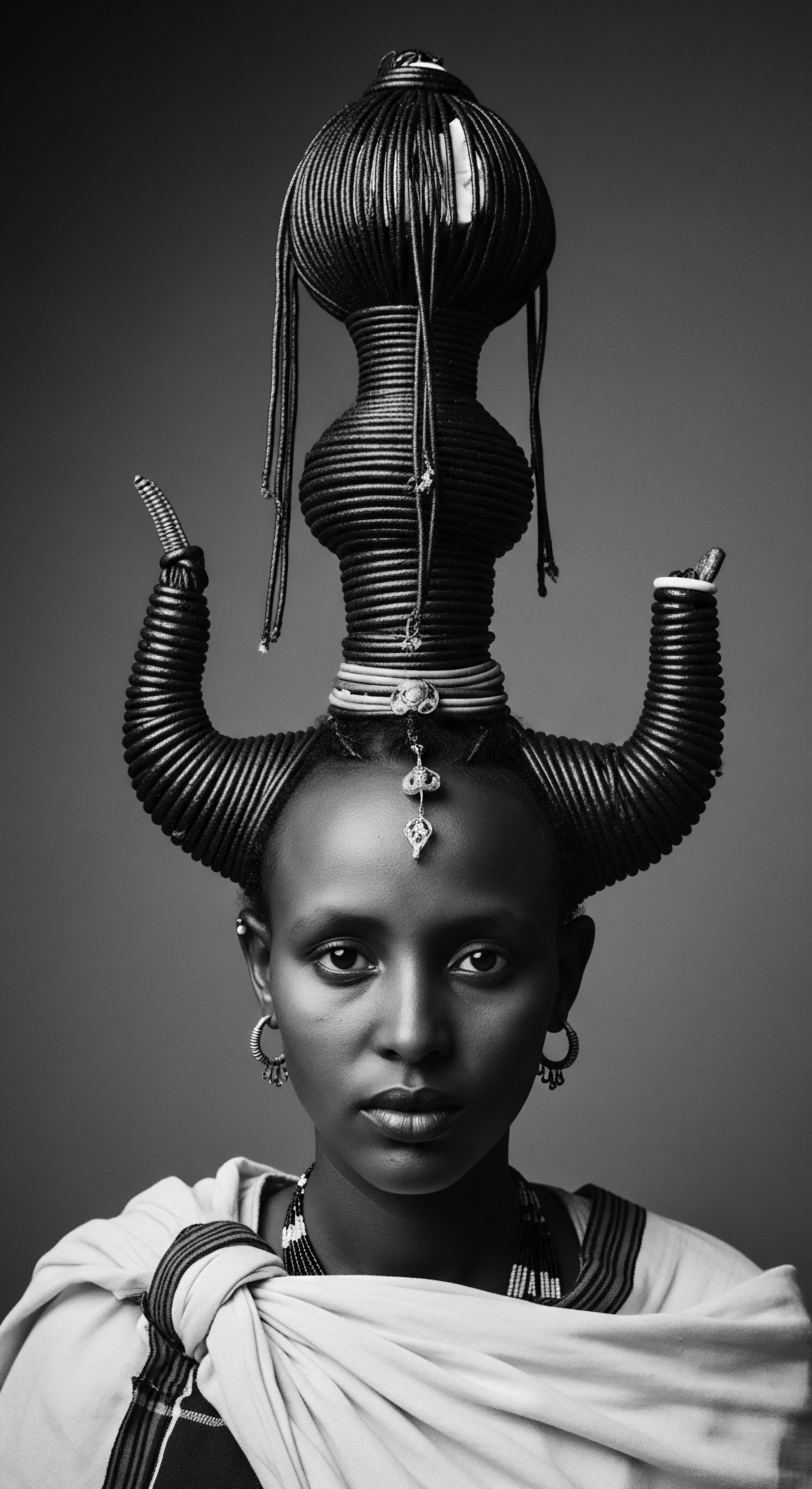
Reflection
The story of hair oiling for textured hair is a testament to perseverance and cultural memory. It is a chronicle whispered not just through time, but across the wide oceans that carried people and their wisdom to new shores. The scientific confirmation of ancestral oiling is not a new discovery; it is rather a profound unfolding, a systematic unveiling of truths that communities of color have always known. Each drop of oil, massaged into a scalp, smoothed down a coil, or worked into a braid, carries the weight of generations—their trials, their resilience, and their unwavering connection to the land and its offerings.
Roothea stands as a living archive, where the scientific explanations for the efficacy of shea butter or the protective attributes of traditional African concoctions elevate these practices to their rightful place of honor. It is a space where the “Soul of a Strand” is not just a poetic phrase, but a recognition of hair as a profound extension of identity, heritage, and well-being. This dialogue between past and present allows us to move forward with a deepened respect for the genius of our ancestors, applying their time-tested knowledge with the clarity of modern understanding. Our textured hair, with its unique patterns and history, becomes a luminous symbol of this ongoing exchange, grounding us in who we have been, who we are, and who we are becoming.

References
- Ethnobotany of African Plants in Hair Treatment and Care ❉ Topical Nutrition and the Antidiabetic Connection? MDPI, 2020.
- Keis, B. et al. “Effect of coconut oil on the hair protein.” Journal of Cosmetic Science, 2005.
- Willetts, B. “Mother Nature’s Conditioner ❉ Shea Butter.” New Directions Aromatics, 2017.
- Healthline. “Shea Butter for Hair ❉ Raw, Hair Growth, and Natural Hair.” Healthline, 2018.
- Wellnesse. “The Magical Effects of Shea Butter on Thick and Curly Hair.” Wellnesse, 2023.
- Newsweek. “Everything You Need To Know About The Ancient Art Of Hair Oiling.” Newsweek, 2022.
- BeautyMatter. “The Untold Story of Jojoba Oil in Black Beauty.” BeautyMatter, 2025.
- Sellox Blog. “Ancient African Hair Growth Secrets For Healthy Hair.” Sellox Blog, 2021.
- Chebe Powder. “The History of Chebe Powder ❉ An Ancient African Hair Secret for Hair Growth.” Chebe Powder, 2025.
